The Jeep Transmission Interchange Guide helps Jeep owners understand how to replace or upgrade their transmission using one from a different model.
The Jeep Transmission Interchange Guide helps you find compatible transmissions for your Jeep model. It includes a transmission cross-reference and interchange chart for easy swapping. Ensure smooth performance by selecting the correct transmission for your vehicle’s needs.
This guide also covers signs of transmission problems, how to swap transmissions and tips for maintenance.
What is Jeep Transmission Interchange?
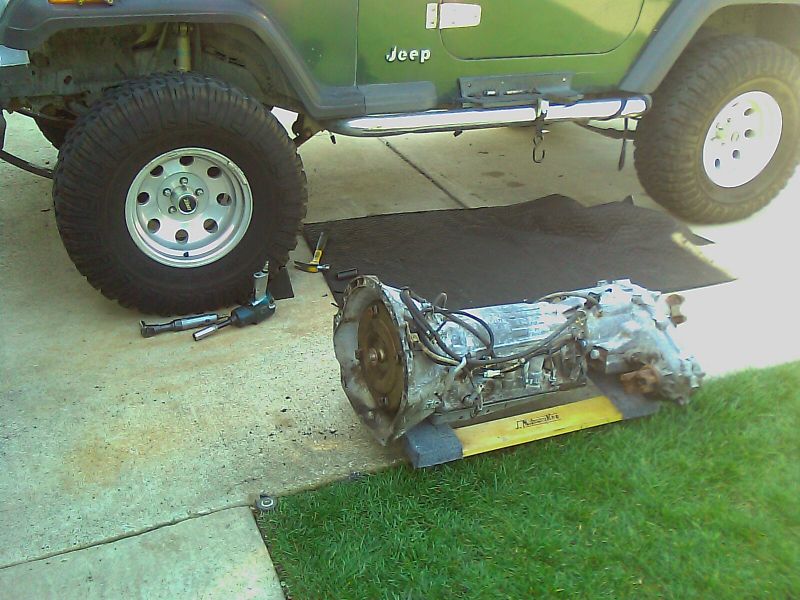
1. Definition and Basic Concept
Transmission interchange means replacing a Jeep’s transmission with a compatible one from a different model. If the parts fit correctly, fixing or enhancing your vehicle is cost-effective.
2. How it Affects Jeep Performance
A compatible transmission keeps your Jeep running smoothly. An improper match may cause issues like rough shifting or reduced efficiency. Choosing the proper transmission can improve reliability and driving experience.
Common Jeep Transmission Types
1. Manual vs. Automatic Transmission
Manual transmissions give you more control but need effort to shift gears. Automatic transmissions are easier to use, making them great for city driving or off-roading. Each has unique advantages for Jeep owners.
2. Different Jeep Models and Their Transmission Types
Different Jeep models have specific transmission types. For example, older Wranglers often have manual transmissions, while newer Grand Cherokees favor automatics. Knowing your model helps you find the best match for repairs or upgrades.
Jeep automatic transmissions
Jeep automatic transmissions shift gears smoothly without driver input. They’re ideal for convenience and off-road adventures. Regular maintenance helps them last longer, ensuring better performance and reliability for your Jeep.
When to Consider a Transmission Interchange
Consider a transmission interchange when your Jeep’s transmission is failing, outdated, or incompatible with your needs. It’s an excellent option for fixing problems, upgrading performance, or extending your vehicle’s life.
1. Signs of Transmission Problems
- Slipping gears or difficulty staying in gear.
- Strange noises like clunking, whining, or humming.
- Delayed or rough shifting between gears.
- Transmission fluid leaks under the vehicle.
- A burning smell, especially during driving.
- Check that the engine light or transmission warning light turns on.
2. Benefits of Transmission Replacement
- Restores smooth and reliable gear shifting.
- Improves fuel efficiency and performance.
- Fixes recurring issues, reducing repair costs long-term.
- Enhances vehicle safety and drivability.
- Extends the overall lifespan of your Jeep.
- Increases resale value with a functioning transmission.
Factors to Consider for Jeep Transmission Interchange
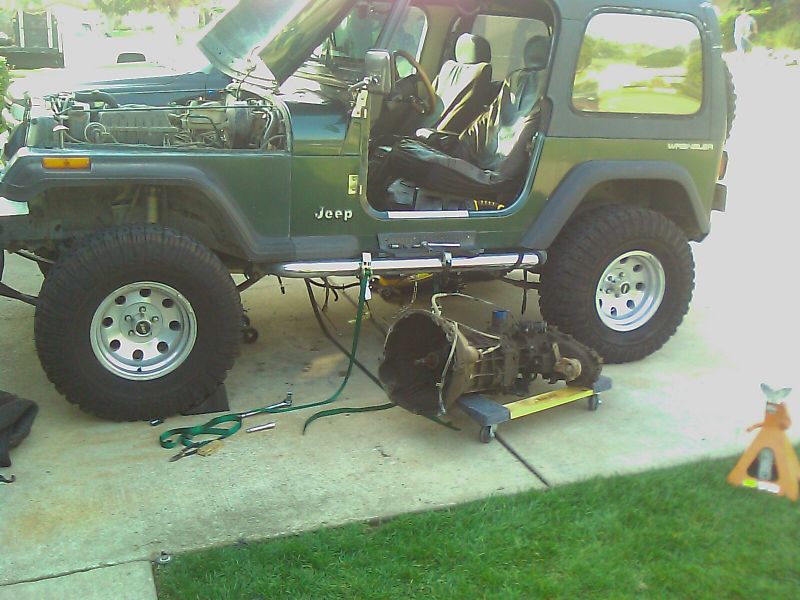
1. Compatibility
Ensure the new transmission fits your Jeep’s model, year, and engine type. Double-check bolt patterns, gear ratios, and electronics. A compatible transmission is crucial for avoiding issues and ensuring smooth operation.
2. Cost and Budget Considerations
Transmission swaps can be pricey, so set a budget. Compare the costs of new, used, or rebuilt transmissions and factor in installation charges to avoid unexpected expenses and keep the project affordable.
3. Performance Needs
Choose a transmission that matches your driving habits. Durability matters for off-roading, and smooth shifts are key. For city driving, Pick what best suits your lifestyle and enhances your Jeep’s performance.
How to Choose the Right Transmission for Your Jeep
1. Matching Transmissions with Engine Types
Your transmission must match your Jeep’s engine type. Different engines need specific transmissions for proper power transfer and efficiency—Double-check compatibility to avoid performance problems or damage to your Jeep.
2. Year and Model Compatibility
Each Jeep model and year may use a unique transmission. Ensure the new transmission aligns with your Jeep’s year and model to prevent fitment issues and ensure smooth operation.
1996 Jeep Cherokee transmission 4-speed automatic
The 1996 Jeep Cherokee features a 4-speed automatic transmission known for its durability. It’s an excellent choice for smooth driving but requires regular maintenance to keep it running efficiently.
2012 jeep transmission interchange guide
Transmission interchange depends on the model and engine of the 2012 Jeeps. Research compatible options or consult a mechanic. A proper fit ensures smooth performance without costly problems during the swap.
Jeep Cherokee transmission interchange
Jeep Cherokee transmissions can often be interchanged between models and years. Check compatibility for engine size and electronics to find the right fit. It’s a cost-effective solution for repairs or upgrades.
Step-by-Step Guide for Jeep Transmission Interchange
1. Removing the Old Transmission
Disconnect the battery, drain the fluid, and remove the driveshaft. Carefully unbolt the transmission. Use a jack for support during removal to ensure safety and prevent damage to surrounding parts.
2. Preparing the New Transmission
Inspect the new transmission for damage and clean it thoroughly. Check for compatibility, including bolt patterns and electronics. Attach essential components like the torque converter before installation.
3. Installing the New Transmission
Align the new transmission with the engine and bolt it securely. Reconnect driveshafts, wiring, and fluid lines. Fill it with fresh transmission fluid, and test it for smooth operation before hitting the road.
Top Jeep Transmission Brands and Models
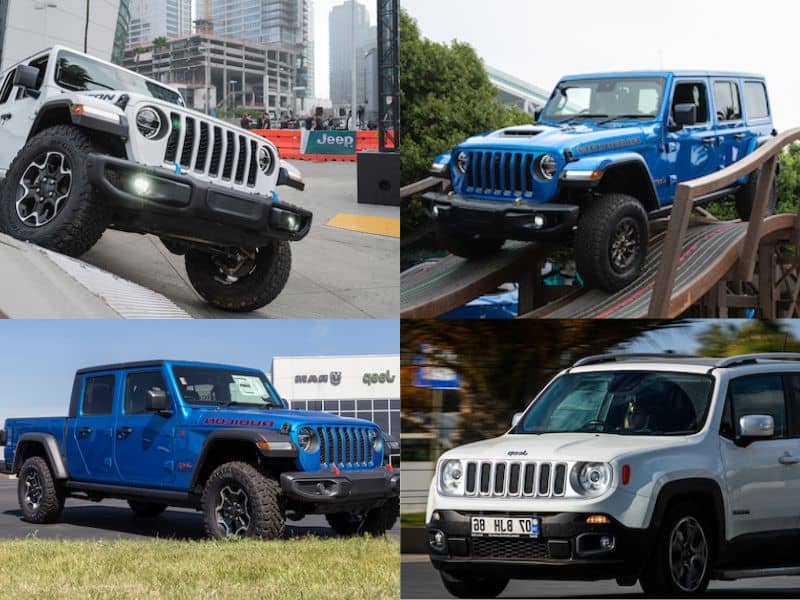
Jeep uses reliable transmissions from top brands like Aisin and BorgWarner. Popular models include AX5, NV3550, and 42RLE. These transmissions are known for durability, off-road capabilities, and smooth on-road performance.
1. Popular Jeep Transmissions (AX5, NV3550, 42RLE, etc.)
- AX5: A light-duty manual, ideal for smaller engines.
- NV3550: A robust 5-speed manual for off-roading.
- 42RLE: A 4-speed automatic, perfect for smooth city driving.
2. Advantages of Each Model
- AX5: Lightweight and easy to maintain.
- NV3550: Great for off-road durability and precise shifts.
- 42RLE: Convenient automatic option with reliable performance.
Jeep Transmission Troubleshooting Tips
1. Identifying Transmission Issues
Look for signs like rough shifting, grinding noises, or delayed acceleration. Check the fluid level and color—dark or burnt fluid could indicate trouble. If warning lights show, it’s time for a check-up.
2. Regular Maintenance Tips
Change transmission fluid regularly to keep it clean and prevent buildup. Check for leaks and inspect the transmission filter. A simple fluid flush can extend the life of your Jeep’s transmission.
Common Jeep Transmission Problems
1. Common Signs of a Failing Transmission
Signs include grinding or slipping gears, difficulty shifting, strange noises, or the “check engine” light. If you notice delays when changing gears or low fluid, it’s time to get it checked.
2. How to Fix These Problems
Fixing transmission issues often involves replacing fluid, changing filters, or repairing leaks. For more severe problems, like worn-out gears, a transmission rebuild or replacement may be necessary to restore function.
How to Extend the Life of Your Jeep Transmission
1. Maintenance and Regular Inspections
Regularly check transmission fluid levels and condition. Inspect seals, gaskets, and hoses for leaks. Schedule professional inspections to catch minor issues before they turn into costly repairs, ensuring long-lasting transmission health.
2. Driving Tips to Preserve Transmission Health
Drive smoothly, avoid rapid acceleration or sudden stops, and refrain from overloading your Jeep. Use lower gears when towing and try to drive in better conditions. These habits can preserve your transmission’s health.
Jeep Transmission Swaps vs. Repairs
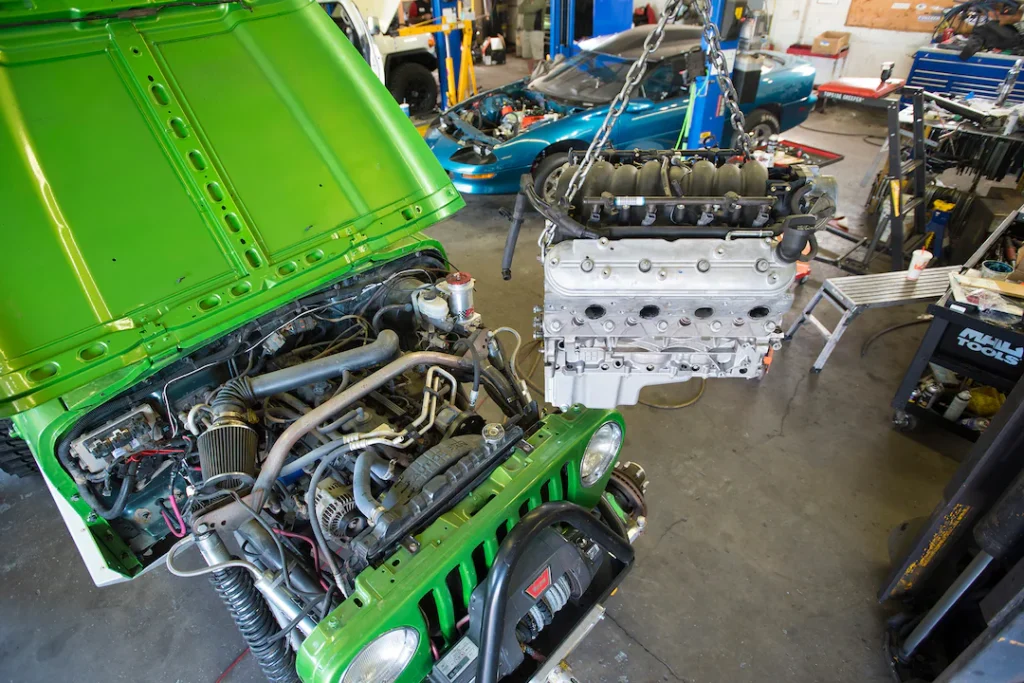
1. When Should You Swap Your Transmission?
Consider swapping your transmission when it’s severely damaged, beyond repair, or incompatible with your Jeep’s needs. A swap may be the best option if it’s causing frequent issues or affecting performance.
2. Repair vs. Replacement: Which Option is Best?
Repairs are usually best if the transmission has minor issues, such as leaks or low fluid. However, replacement can restore performance and reliability if the transmission is worn out or causing significant problems.
Aftermarket Jeep Transmissions
1. Overview of Aftermarket Options
Aftermarket transmissions offer various models for different Jeep types, including high-performance or off-road options. They can be new or rebuilt and often come with warranties, providing flexibility and potential savings.
2. Pros and Cons of Aftermarket Transmissions
- Pros: Lower cost, more variety, improved performance options.
- Cons: Quality can vary, and potential fitment issues may void warranties. Always research and choose trusted brands to ensure long-term reliability and performance for your Jeep.
Jeep 4.0 transmission options
The Jeep 4.0 engine offers several transmission options, including automatic and manual choices. Popular options are the AW4 automatic and the AX15 manual. Each provides different benefits to performance and driving style.
AW4 transmission
The AW4 is a 4-speed automatic transmission commonly found in older Jeeps like the Cherokee XJ. It’s known for smooth shifting, reliability, and good performance, especially in off-road conditions.
XJ automatic transmission swap
Swapping the XJ’s automatic transmission may be needed for upgrades or repairs. Popular swaps include replacing the AW4 with another AW4 or a similar automatic, which offers improved performance or addresses specific issues.
Jeep XJ transmission
The Jeep XJ typically uses the AW4 automatic or AX15 manual transmission. These are known for their strength and off-road capabilities, making them excellent choices for daily driving and rugged adventures.
FAQs
1. How do I tell what Jeep transmission I have?
You can check the transmission tag, look at the model and year, or consult the owner’s manual.
2. What vehicles used the AW4 transmission?
The AW4 transmission was used in Jeep Cherokee XJ, Comanche MJ, and some Grand Cherokee models.
3. What jeeps have a 42RLE transmission?
The 42RLE transmission is in Jeep Liberty, Jeep Grand Cherokee, and some early Jeep Wranglers.
4. What does WJ mean for Jeep?
WJ refers to the second-generation Jeep Grand Cherokee, produced from 1999 to 2004.
5. Can my VIN number tell me what transmission I have?
Your VIN can provide details about your Jeep, including the transmission type and model.
6. How do you know if your Jeep is JK or JL?
Look at the model year; JK is from 2007-2018, while JL is from 2018 onwards.
7. What do TJ, JK, and JL stand for?
TJ, JK, and JL are Jeep model designations: TJ (1997-2006), JK (2007-2018), and JL (2018-present).
8. What year did Jeep switch to JL?
Jeep switched to the JL model in 2018, replacing the JK with updated features and design.
9. What is the difference between JL and JK transmission?
The JL transmission offers improved efficiency and more advanced technology compared to the JK’s older design.
10. How do I know what gears my Jeep has?
To identify your Jeep’s gear ratio, check the door sticker, owner’s manual, or VIN number.
Conclusion
In conclusion, the Jeep Transmission Interchange Guide is helpful for Jeep owners looking to swap or upgrade their transmissions. Ensuring compatibility, performance, and cost-effectiveness helps maintain smooth operation and prolongs the life of your Jeep. Regular maintenance is critical!

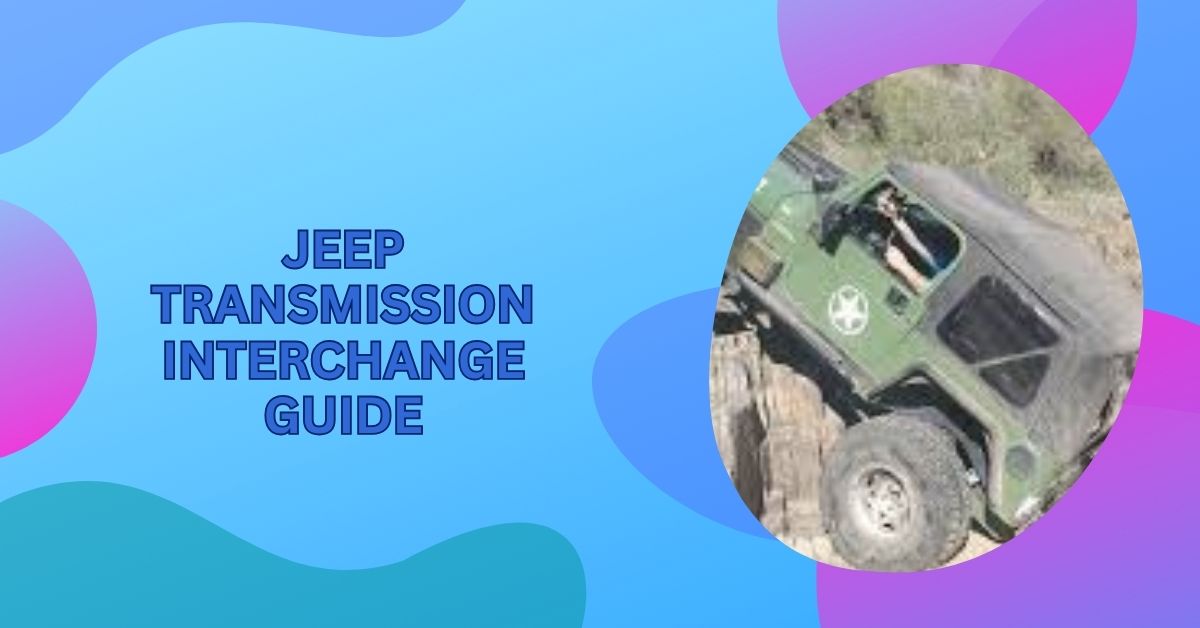




0 Comments